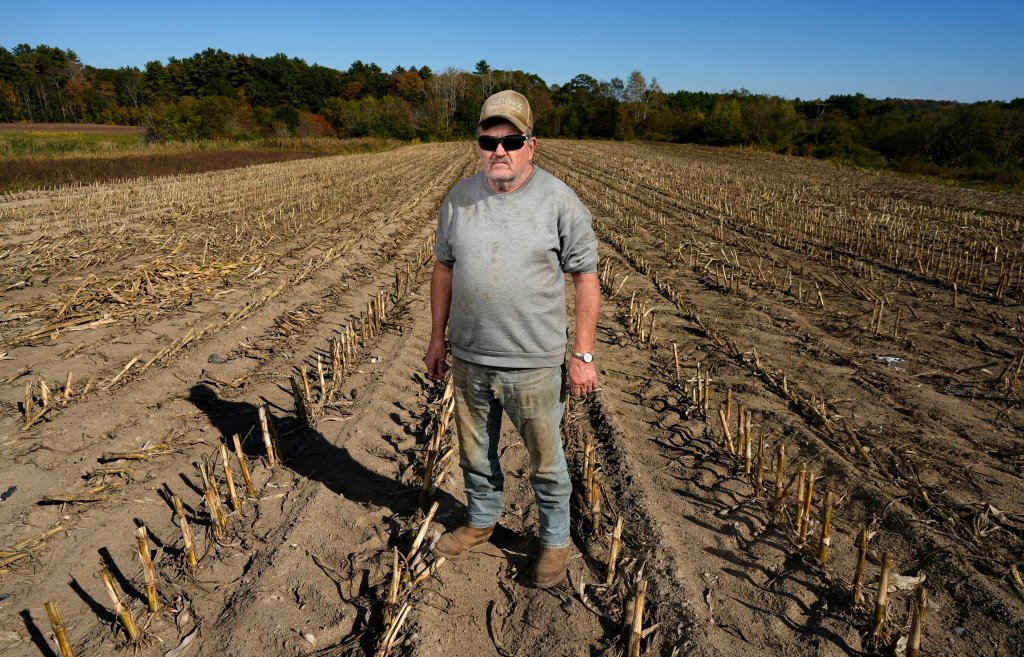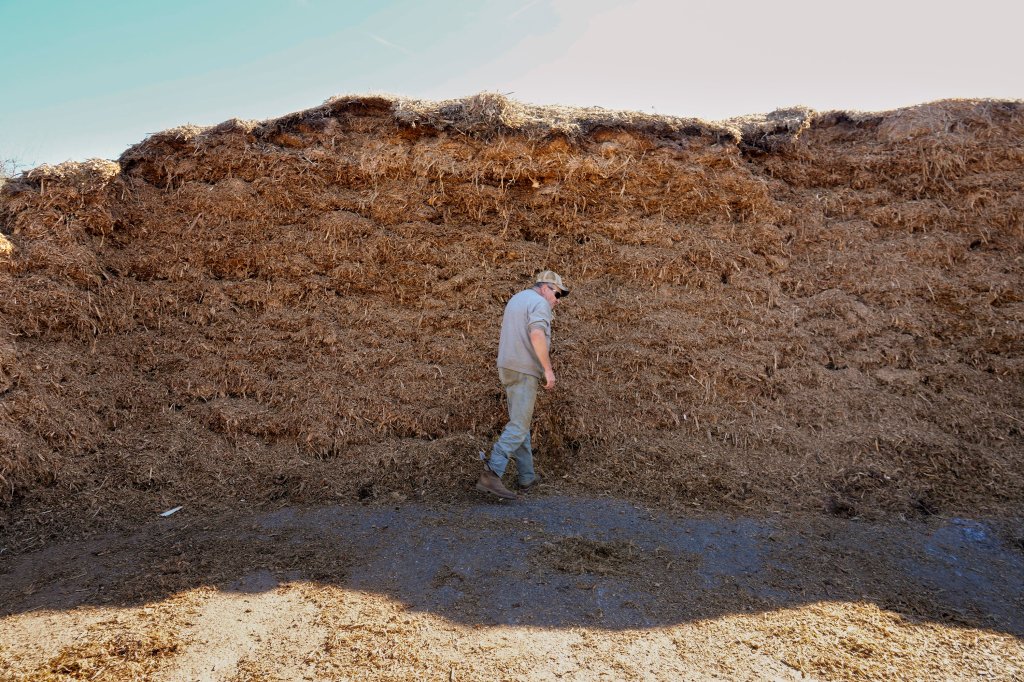
Heath Miller has been on the hunt for water since June.
That is when the first summer heat wave hit Maine and the Newburgh dairy farmer realized the two wells that he relies on to water his 260 milking cows were running low. His cows need 50 to 80 gallons of water a day, depending on how hot it is, and Miller was worried.
“The cows can’t run out of water,” Miller said. “A dry cow won’t milk.”
Miller decided to haul water from his home to make up the difference until the rains came — but they didn’t, at least not enough to replenish the wells.
This year, Maine saw its sixth-driest summer on record, with nearly 3 fewer inches of rain than the historical average of 11 inches, according to the National Weather Service. As of Oct. 2, more than half of the state was in severe or extreme drought.
The Maine agricultural economy is grappling with significant long-term repercussions from the persistent drought, which deprived crops of critical water in July and August and now threatens next year’s harvests, state officials said Thursday at a meeting of the state’s Drought Task Force.
The drought has caused reductions in hay crops, shortened the season for many row crops, resulting in smaller harvests, and it could hurt next year’s berry and tree fruit, according to Tom Gordon, soil and water conservation program coordinator at the Maine Department of Agriculture, Conservation and Forestry.
“For agriculture, timing is everything,” Gordon said. “Consistency of precipitation is what’s essential and we can’t in agriculture really catch up on lost precipitation. We need about 1 inch of water per week for crops, and that was lacking during the critical growing season.”
‘READY TO GET BACK TO FARMING’

Bob Parsons, owner of Parsons Dairy Farm in Gorham, said his farm’s corn silage crop yield was down about 20% compared with last year. He finished chopping the summer’s crop from 125 planted acres and it needs to last his dairy herd of 75 milking cows for a year.
The crop looked good early on, he said, but was set back by a lack of rain as summer continued.
“It just shriveled up,” Parsons said. “It was bad.”
Most of Maine will need an extra 6 to 12 inches of rain above normal levels — 125% to 175% of the seasonal average — before the ground freezes in order to come out of drought, National Weather Service hydrologist Sarah Jamison said. If that doesn’t happen, task force officials fear the drought will create groundwater deficits and dry wells through the winter and into the spring.
As of the end of September, Maine residents had reported 306 dry or contaminated wells, state records show.
Miller said that, at one point, he doubled how much water he was hauling from his home well, paid his milk hauler to truck in city water and hired a contractor to double the depth of one of his irrigation wells. With the possibility the drought could last through winter, Miller said he planned to move 100 calves into a friend’s rented barn with its own water supply.
“After a summer of hauling water, I’m ready to get back to farming,” Miller said. “As farmers, we’re always dealing with weather, and we’ll make due, of course, but the idea of the drought going into next year is depressing.”
‘YOU CAN’T GIVE UP’
Maine DACF is taking steps to help farmers cope with the ongoing crisis, Gordon said. It plans to open grant applications for the Farmer Drought Relief Program after this growing season has ended and grants will be awarded in spring 2026.
Maine also has a history of passing water bonds, Gordon said. Past bonds have been used to fund a range of projects, from building sewage treatment plants to wetland restoration, but some have helped farmers develop new sources of agricultural water, he said.
Seth Kroeck used a federal cost-sharing program to mulch his wild blueberry crop this year as a defense against drought at Crystal Spring Farm in Brunswick. It is a two-year crop, he said, meaning the berries he mulched this year will fruit in 2026. He lost more than half of those set to fruit this summer.
“It was a really bad year,” Kroeck said. “The wet spring really hurt our pollination. Then the berries we did get pollinated were really small because we had to harvest them early because of 11 or 12 weeks of no rain at all. The berries, the plants, they were drying right up.”
The mood was grim at a meeting of Maine’s wild blueberry growers Wednesday, he said. The outlook for the state harvest, while not complete, does not look good. He said many other growers reported similar losses to what he has experienced. Some were worse.
Kroeck said he is expecting double-digit losses in his carrot and Brussels sprouts crops, but those seasons are not over yet, so he doesn’t know for sure. He plans to install a new irrigation system in the spring — one that is lower to the ground to reduce water loss to evaporation.
“You can’t give up,” Kroeck said. “We find new ways to improve, to conserve, do better every year.”


We invite you to add your comments. We encourage a thoughtful exchange of ideas and information on this website. By joining the conversation, you are agreeing to our commenting policy and terms of use. More information is found on our FAQs. You can modify your screen name here.
Comments are managed by our staff during regular business hours Monday through Friday as well as limited hours on Saturday and Sunday. Comments held for moderation outside of those hours may take longer to approve.
Join the Conversation
Please sign into your CentralMaine.com account to participate in conversations below. If you do not have an account, you can register or subscribe. Questions? Please see our FAQs.